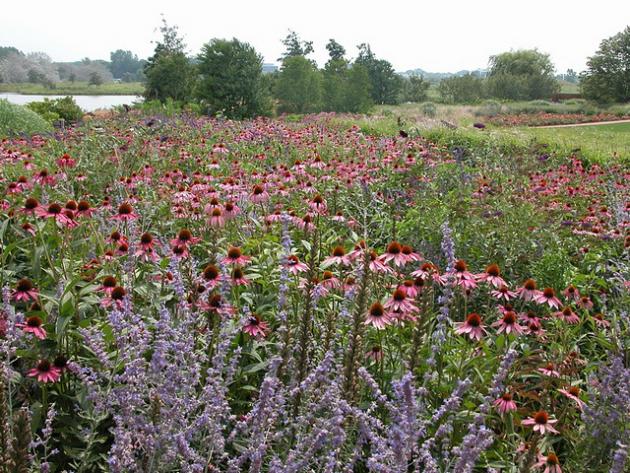The use of native plants in the landscape is becoming increasingly popular. Native plants are adapted to local conditions and, if planted properly, can thrive on sites non-natives may not tolerate. This can reduce the need for additional pesticides and fertilizers.



A common misconception is that native plantings end up looking like a weed patch, however, garden beds can be attractively arranged using basic design principles.
Native plants can be grouped into clumps or drifts to create a more natural effect. Observing and understanding how plants in native landscapes are organized is key to creating a successful native garden.
Characteristics of Native Plants
- Reflects the local native landscape
- Provides food and cover for birds, bees, butterflies and other local wildlife
- Adapted to local climate and soils (exception is riparian and wetland landscapes with much higher water needs)
- Naturalized style
- Can be lower maintenance
- Use less or no pesticides
Additional Resources:
West
Idaho: Landscaping with Native Plants
Nevada: Native Plant Characteristics…
